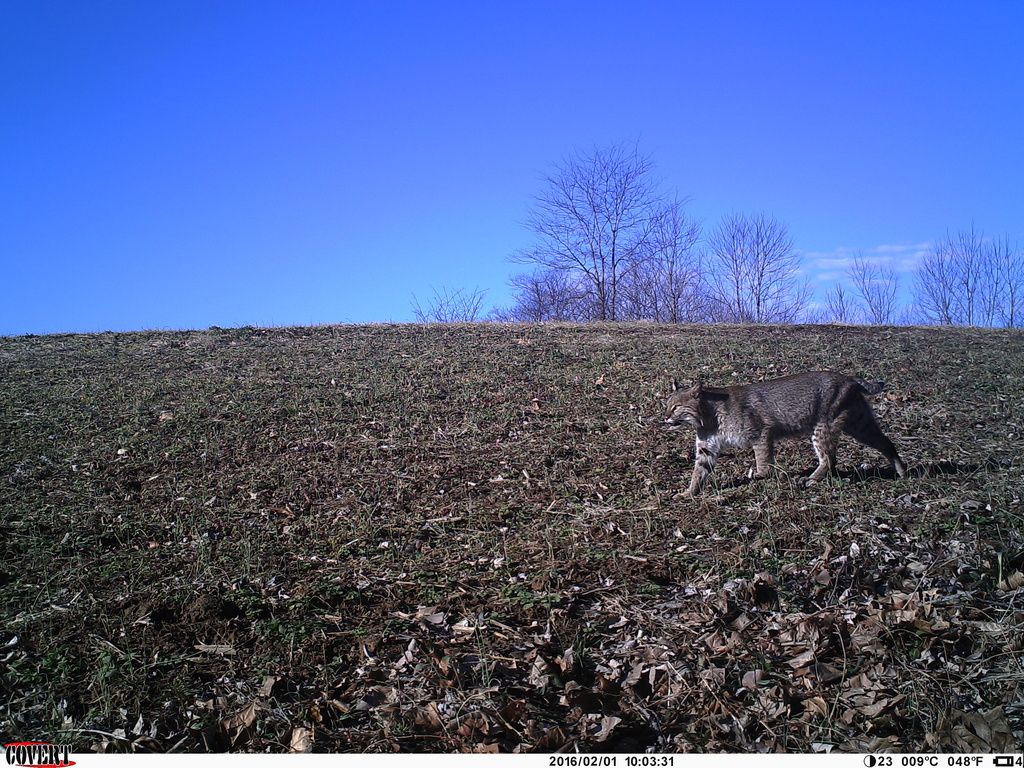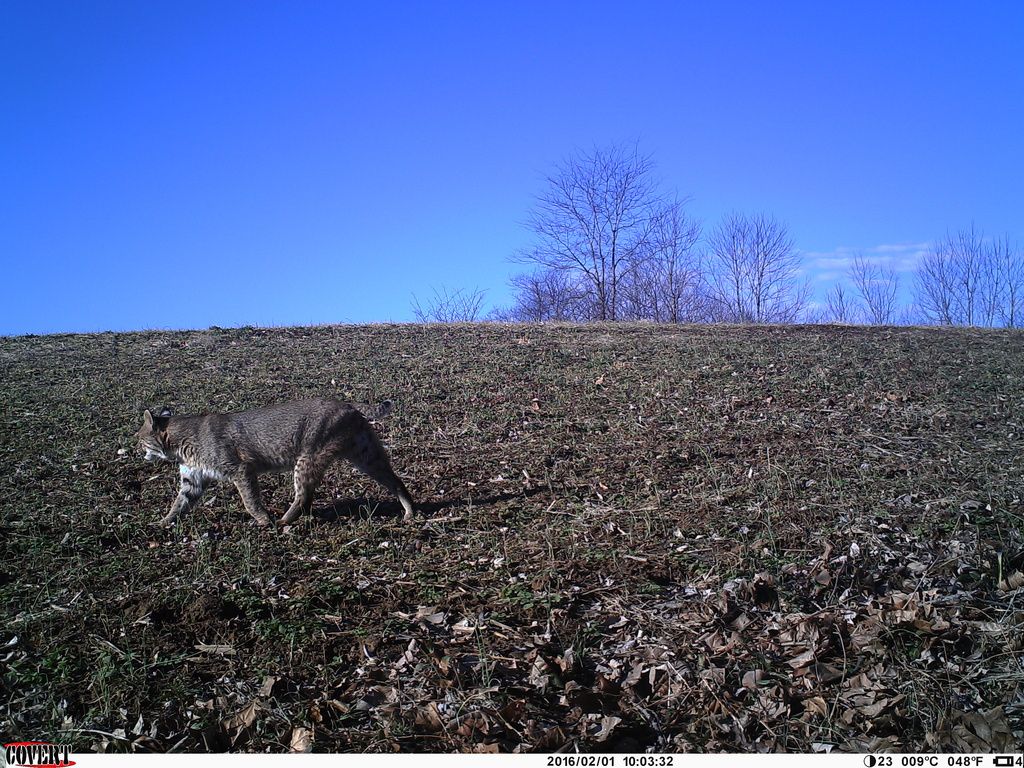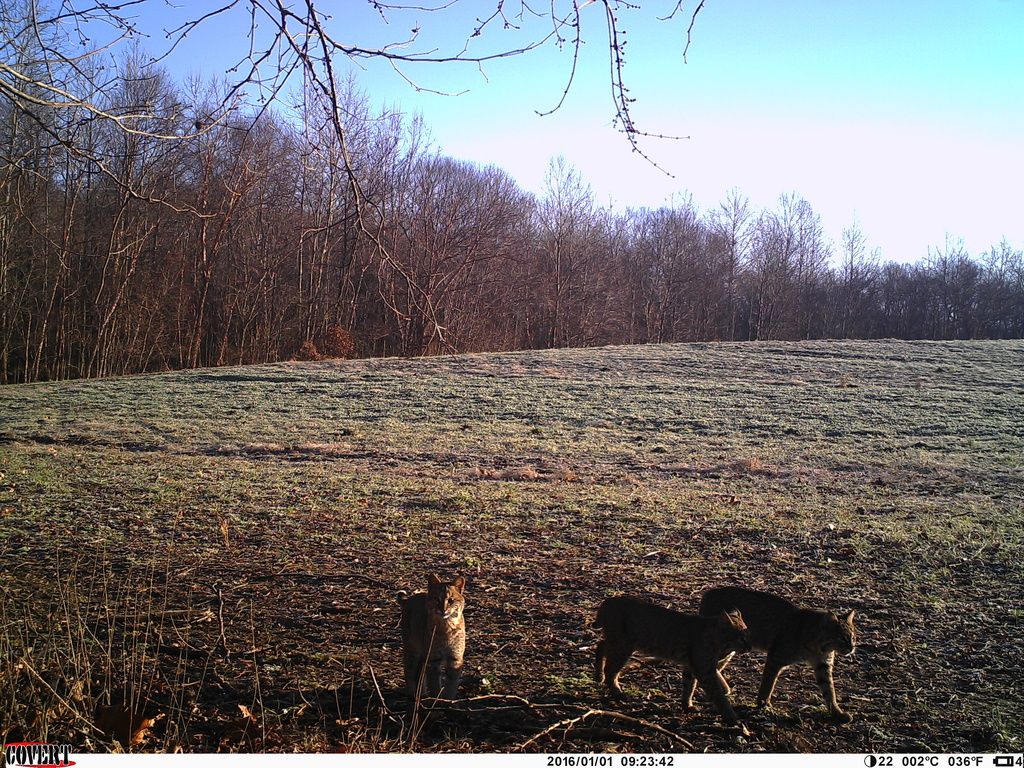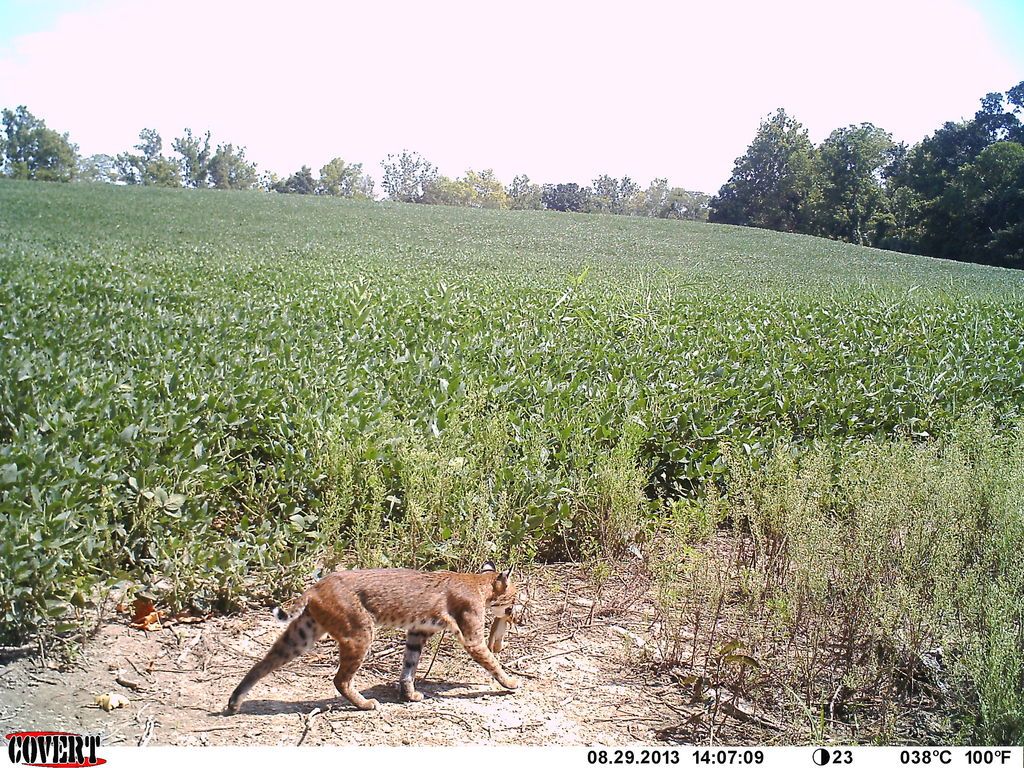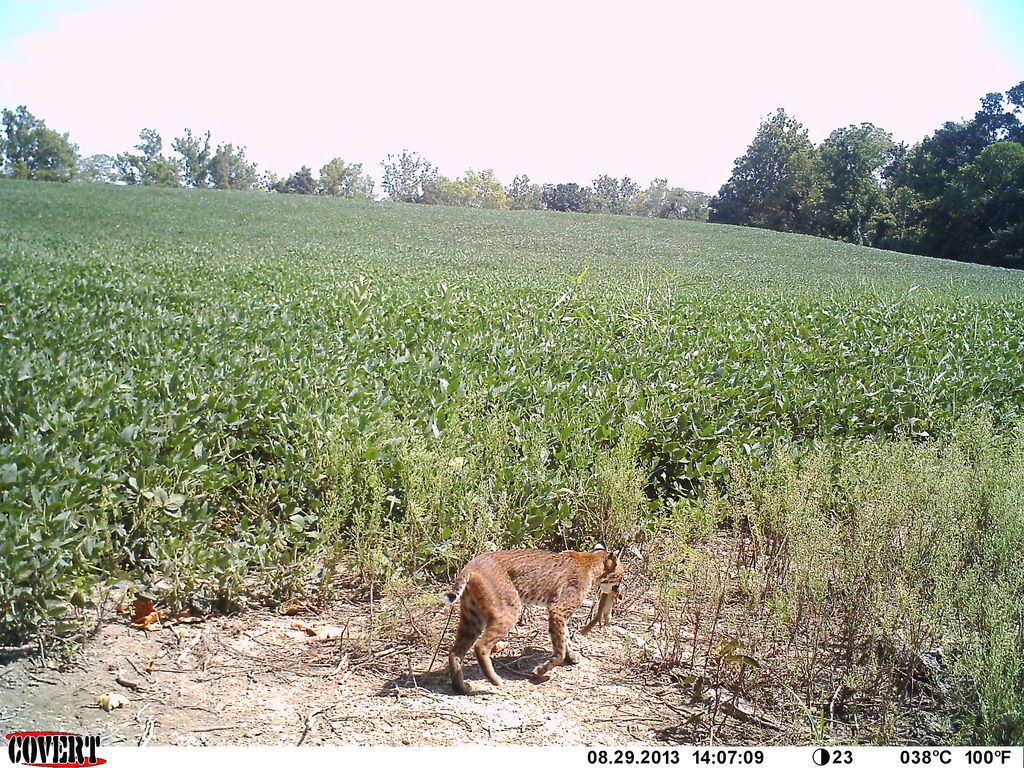

You are using an out of date browser. It may not display this or other websites correctly.
You should upgrade or use an alternative browser.
You should upgrade or use an alternative browser.
bigbuckhunter88
PMA Member
Sweet pic of the cat with the prey in his mouth. Good luck come fall
Fishbonker
Life Member
Thanks for sharing. Some great looking short tails.
This is why I run game cameras; just to see what variety of wildlife is out there.
By the way, for a cat to be a "house cat" it actually needs to be in a house. That right there is a feral cat.
This is why I run game cameras; just to see what variety of wildlife is out there.
By the way, for a cat to be a "house cat" it actually needs to be in a house. That right there is a feral cat.
bigbuckhunter88
PMA Member
Thanks for sharing. Some great looking short tails.
This is why I run game cameras; just to see what variety of wildlife is out there.
By the way, for a cat to be a "house cat" it actually needs to be in a house. That right there is a feral cat.
Bonker, I see you services are needed in Illinois. Maybe you should tell him how to eradicate his "house" cat problem
Fishbonker
Life Member
Bonker, I see you services are needed in Illinois. Maybe you should tell him how to eradicate his "house" cat problem
First you have to take inventory of how many feral cats are on you property. I put out several cameras on well traveled feral cat routes. Pans of feral cat food and saucers of milk will slow them down long enough for a good feral cat count and help ID them in step number #5. You may get a lot of unwanted pics of coons an possums in your inventory but the time spent sifting through thousands of pics is worth it.
Second, before trapping season opens find a 5 gallon bucket, any color will do, cut notches in the top sides of the bucket just above the handle so a 220 body grip trap can slide into the notches. Drill a 5/8" whole near the base of the bucket, roll the bucket so the opposite side is up and drill another hole as close to 180 degrees from the other hole as possible. These holes need to be 90 degrees from the trap notches. Cut three pieces of 1/2" re bar (also known as re rod) into 36" lengths, longer if your feral cat inventories indicate the feral cats on your property are large, say greater than 14 pounds. The number of buckets and traps depends on the results of your inventory.
Third, make a hit list based on estimates of their weight, fang length and tail length, give them catchy names like "Fluffy", "Hello", "Socks", "Sir Lancelot" or "Boots". Post pics of your hit listers and ask other feral cat trappers what they estimate Fluffy will score.
Fourth, wait until trapping season is open, follow your State's trapping laws closely, set your buckets and traps on the feral cat runs you have identified as potentially the most productive. Set the bucket so the holes near the base are perpendicular with the ground. Drive a piece of re bar through the holes 14 and 3/4" into the ground to secure the bucket, deeper if you have hit listers in the record book range. Next you need to bait the bucket. I have successfully used everything from feral cat food to frozen moldy potato salad. My best bait though is ham scraps and sardines. You may, unfortunately, trap non target animals such as the coons and possums that plagued your inventory pics with any baits you use. After you bait the bucket, place the set trap in the notches you cut. Take a piece of re bar place it through the spring eye and drive it 18" into the ground, repeat for the other side. Release the safeties and head to the next set. When all your sets are out, head home to wait in anxious anticipation of what you may find in the morning.
Fifth, check your traps at least once a day. A trap that is tripped does you no good. If you are fortunate enough to catch your target species dig through your hit lister pics to see if you can identify your kill. Then weigh, measure fangs and tail length. Compare it to your estimates. Take pics and share with other feral cat trappers.
Sixth, repeat steps 4 and 5 until season is over or until all hit listers are gone.
Seventh, enjoy more song birds, and other wildlife that the feral cats ate or were in competition with for food.
You're on your own on what to do with dead hit listers.
Matthewfox_45
Well-Known Member
For disposal, I recommend a technique similar to the hammer toss!

